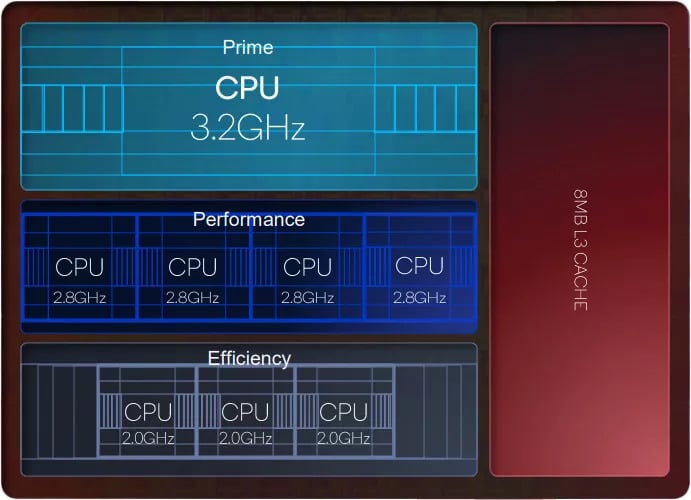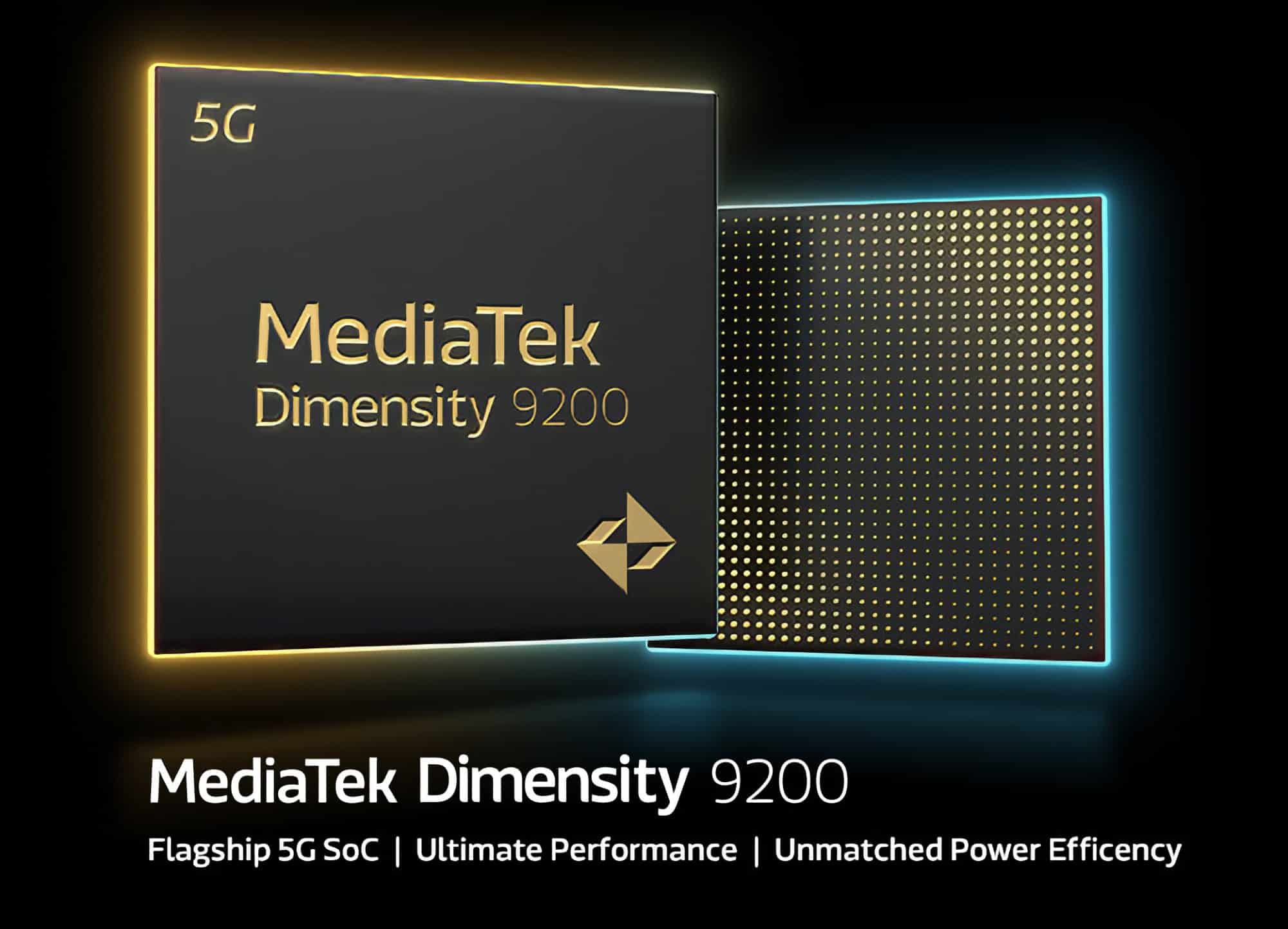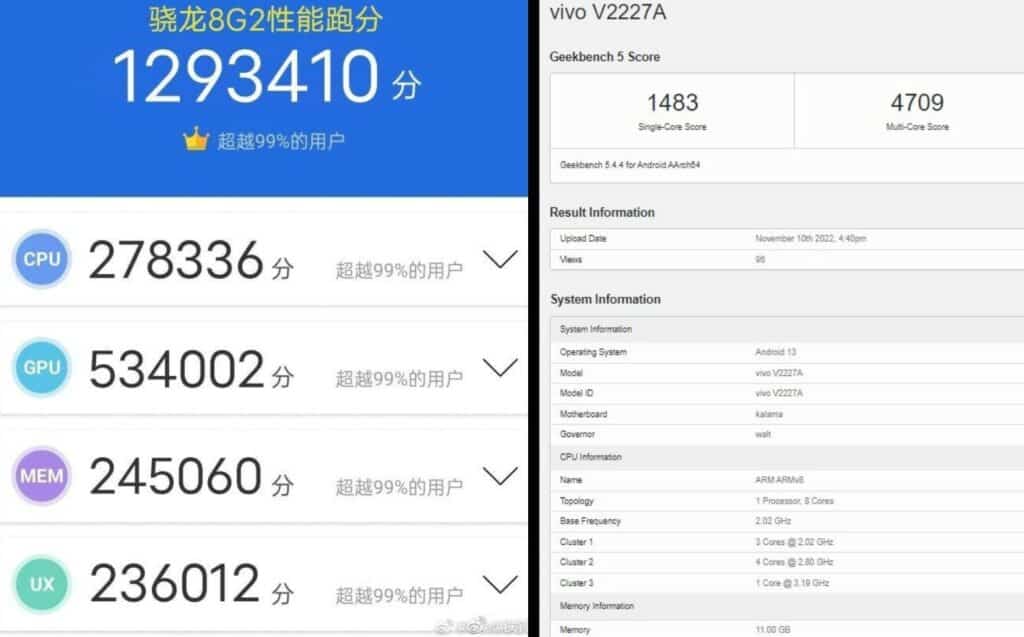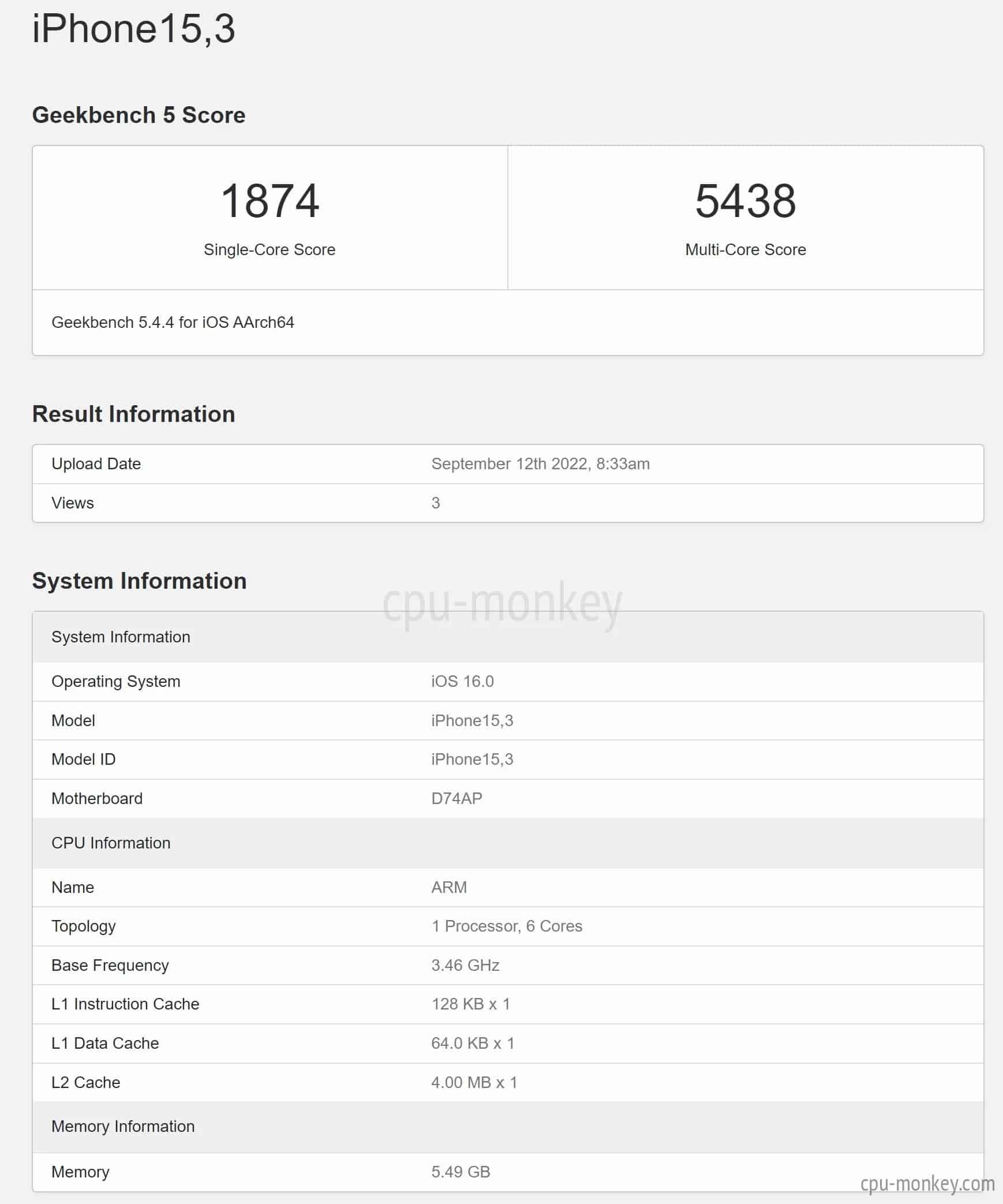We guess you all know that Qualcomm has released the second-generation Snapdragon 8 platform. The Snapdragon 8 Gen 2 is a true beast ready to beat all its rivals. On the other hand, MediaTek released the Dimensity 9200 some time ago. Its performance reached the ceiling as well. Both chips come with GPUs that support hardware-level light-tracing technology. However, judging from the benchmark results, despite the performance increase, these two chips are still far away from the A16. But we also have to say that the difference is not significant.
Snapdragon 8 Gen 2 parameters
The Snapdragon 8 Gen 2 model is SM8550-AB. It is built using TSMC’s 4nm process. The company said that the second-generation Snapdragon 8 has a 35% improvement in CPU performance compared to the first-generation Snapdragon 8. Moreover, its energy efficiency has been increased by 40%. In terms of GPU, our protagonist integrates the new Adreno GPU. Due to ray tracing technology, it has a 25% performance improvement and a 45% energy efficiency improvement.
Dimensity 9200 parameters
At the same time, its closest rival, the Dimensity 9200, integrates 17 billion transistors, becoming the industry’s first processor using TSMC’s second-generation 4nm process technology. Also, the chip uses a 3.05GHz X3 super core, three 2.85GHz A715 cores, and four 1.8GHz A510 small cores, forming a three-cluster architecture design.
The Dimensity 9200 integrates the Immortalis-G715 MC11 GPU. The Taiwanese company claims that the Dimensity 9200 has a 12% improvement in CPU single-core performance and a 10% improvement in multi-core performance in GeekBench 5 compared to the previous generation, Dimensity 9000. The capacity is increased by 10%, and the power consumption is reduced by 25% under the same performance.
Apple A16 parameters
The parameters on the paper prove that these two chips come with improved performance. This statement refers not only to the performance but also the power consumption. These two have been the problem of Android users for a long time. Unfortunately, both still failed to surpass Apple’s latest A16 chip in terms of benchmark points.
The A16 chip is built using TSMC’s N4P third-generation 5nm process, bringing some relatively modest performance improvements. Compared with the original 5nm “N5” manufacturing process, N4P provides 11% performance improvement, 22% energy efficiency improvement, and 6% density improvement.
The number of transistors in the A16 chip will increase from 15 billion to 18-20 billion, and at the same time, its CPU speed is increased by 15%.
In addition, the A16 bionic chip is composed of two high-performance cores and four high-efficiency cores. It is very suitable for running graphics-intensive games and apps. The new 16-core neural network engine has a processing capacity of up to 17 trillion operations per second. This chip can provide higher performance with extremely low power consumption.
Compared with the previous generation, the A16 is actually not a big upgrade and even has a regression in terms of energy efficiency ratio. But the number of transistors is still far beyond the MediaTek Dimensity 9200. As for the Qualcomm Snapdragon 8 Gen 2, we have no information concerning a specific number of transistors.
Comparing Apple A16 with other two chips
In the GeekBench 5 benchmark test, the Dimensity 9200’s single-core performance is 1424 points, while in the multi-core test, it scored 4471 points. Compared with the previous generation Dimensity 9000, this is indeed a significant improvement. The Qualcomm Snapdragon 8 Gen 2’s single-core points are 1483 points, while the multi-core points reached 4709. There is not much difference between the two in the single-core test, but in terms of the multi-core test, the Snapdragon 8 Gen 2 is still far ahead of Dimensity 9200.
Honestly, these two perform pretty well. But none of them can beat the Apple A16.
The Apple A16 scored 1874 points in the single-core and 5438 points in multi-core tests in GeekBench 5. Both single-core and dual-core results are much higher than those of the Dimensity 9200 and Snapdragon 8 Gen 2. Even the iPhone 13 Pro with the A15 chip on the iPhone 14 standard version has a single-core score of 1709. This also shows that Qualcomm and MediaTek have a long way to go to surpass Apple’s A-series chips in terms of CPU performance.
But users don’t need to despair. The new Dimensity 9200 and Qualcomm 8 Gen 2 have a huge upgrade in terms of GPU performance. Especially the Dimensity 9200, in the GFXBench 5.0 test, scored 66.4 frames. The A16 scores 53.3 frames, while the A15 scores 53.6 frames. The difference is noticeable.
Both the Dimensity 9200 and Qualcomm 8 Gen 2 support hardware-level light-tracing technology. The exploration of GPU can bring a better user experience to Android users. However, this does not mean that the difference in CPU performance between Android and Apple can be ignored.





